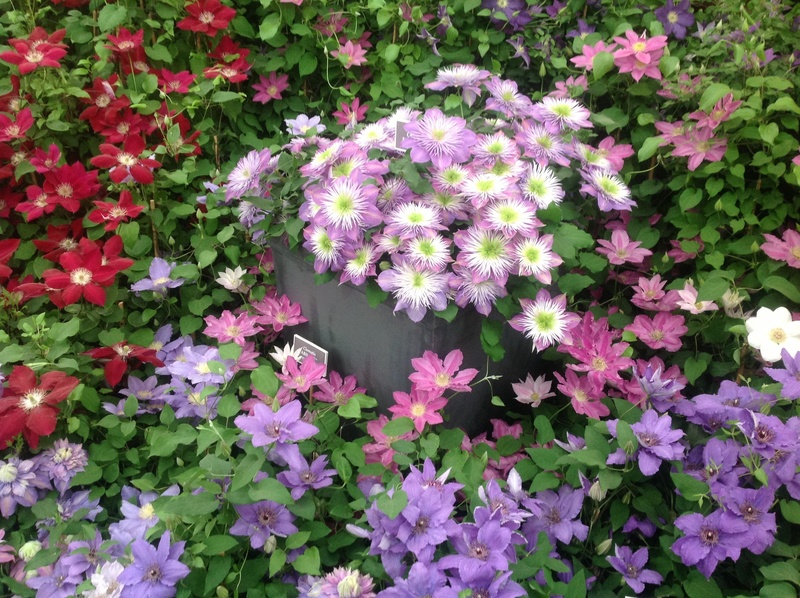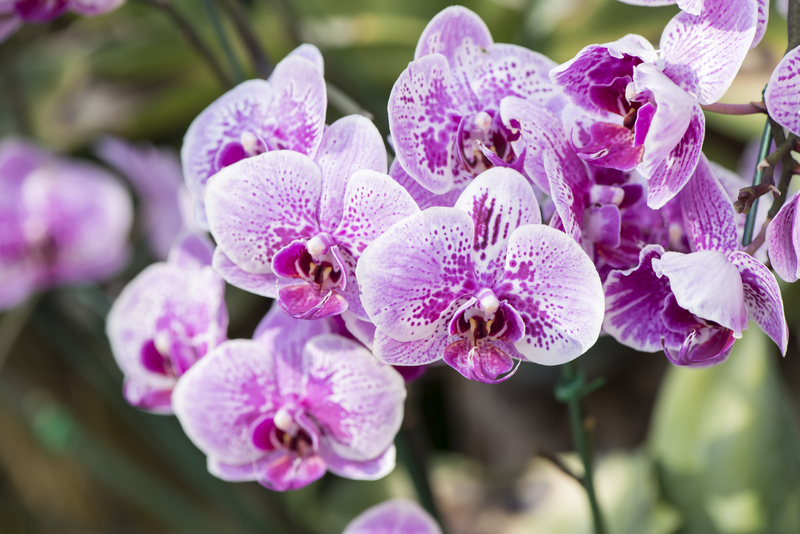Create a living masterpiece with vertical gardening
Posted on 16/09/2025
Create a Living Masterpiece With Vertical Gardening: The Ultimate Guide
Are you yearning to bring a lush, vibrant touch to your home or workspace but limited by your square footage? Vertical gardening is not only the solution but an opportunity to create a living masterpiece that's both beautiful and functional. Whether transforming a small balcony or redefining a spacious patio, vertical gardens maximize your green impact without sacrificing precious floor area.

What is Vertical Gardening?
Simply put, vertical gardening is the practice of growing plants upward on a vertical surface. By using walls, trellises, or specially designed panels, you can transform blank spaces into lush, living works of art. This innovative method isn't just for aesthetic appeal--it's also a practical solution for urban gardeners, those with limited space, or anyone wanting to add natural beauty to unconventional spaces.
- Maximizes available space
- Improves air quality
- Enhances energy efficiency
- Promotes mental well-being
- Increases biodiversity
Why Choose Vertical Gardening for Your Space?
Imagine a living tapestry of colors, textures, and fragrances gracing an otherwise dull wall. Vertical gardens or green walls, as they are sometimes called, are revolutionizing the way we incorporate greenery into our lives. Here's why you should consider creating your own living masterpiece:
1. Space Optimization
In urban environments, space is often scarce. Vertical gardening allows even those with the smallest balconies or patios to introduce abundant plant life into their environment without encroaching on valuable floor space.
2. Aesthetic Appeal
A well-designed vertical garden transforms ordinary, stark walls into living works of natural art. From stunning floral cascades to edible garden panels, the design possibilities are endless.
3. Health Benefits & Air Purification
Plants absorb carbon dioxide, release oxygen, and filter out pollutants. Creating a living wall not only enhances your decor but also improves indoor and outdoor air quality.
4. Thermal Insulation & Energy Savings
Vertical gardens can act as natural insulators for your home. By shielding your walls from direct sunlight, they help regulate temperatures, reducing the need for excessive heating or cooling.
5. Boosts Biodiversity
Introducing a variety of plants supports local insects, birds, and beneficial pollinators, creating a micro-ecosystem even in urban areas.
Popular Types of Vertical Gardens
There's a vertical gardening solution for every style and need. Let's explore a few common variations to inspire your living wall garden:
- Living Wall Panels - Prefabricated systems with slots or pockets for individual plants.
- Trellis Gardens - Wood, metal, or plastic trellises paired with climbing plants.
- Pocket Gardens - Felt or fabric pockets attached to walls for herbs, succulents, or flowers.
- Recycled Container Walls - Upcycled bottles, cans, or gutters turned into creative vertical planters.
- Freestanding Towers - Stacked pots or structures that create a green pillar effect.
How to Start Your Own Vertical Garden
Ready to create your own vertical living masterpiece? Good news: it's easier than you think! Follow these steps to design, build, and care for your vertical garden.
Step 1: Select the Right Location
Evaluate sunlight exposure, available wall space, access for watering, and structural support. Indoors or outdoors, your spot should cater to the needs of your plants.
Step 2: Choose a Vertical Gardening System
- DIY Pocket Systems: Inexpensive and customizable; ideal for renters or those experimenting with small spaces.
- Modular Living Wall Kits: Prefabricated systems for easier installation, often including irrigation.
- Trellises and Supports: Great for larger walls and climbing plants like ivy, clematis, or even tomatoes.
Step 3: Decide on Plant Selection
Your choice of plants determines both the aesthetic and practicality of your green wall. Consider:
- Light and temperature requirements
- Growth habits (cascading, upright, climbing)
- Watering frequency
- Maintenance needs
*Some popular vertical garden plant choices include:*
- Ferns and mosses for shady, humid spots
- Colorful annuals (petunias, begonias) for a splash of color
- Herbs like basil, thyme, and mint for culinary use
- Succulents for dry, sunny walls
- Climbing vegetables (peas, beans, cherry tomatoes)
Step 4: Design & Layout
Sketch your garden on paper or use a design app. Consider how plant colors, heights, and textures interact. Layering and clustering similar species can create dramatic effects while supporting healthy growth.
Step 5: Installation & Planting
- Mount your support structure. Ensure it's sturdy and safe for the weight of mature plants and moist soil.
- Add soil or growing medium. Use lightweight, well-draining potting mix; consider adding slow-release fertilizer.
- Arrange plants. Position larger or cascading plants at the top, with smaller species lower.
- Water generously after planting. Ensure roots are settled and soil is moist but not waterlogged.
Step 6: Maintenance & Care
- Watering: Most living walls require more frequent watering than traditional garden beds. Drip systems or self-watering containers simplify upkeep.
- Fertilizing: Feed plants every few weeks during the growing season for vigorous growth.
- Pruning: Trim dead leaves and overgrowth to maintain a neat appearance and encourage healthy renewal.
- Pest Control: Inspect regularly for signs of insects or disease and take prompt action if needed.
Inspiring Vertical Garden Ideas
Looking for creative ways to put your green thumb to the test? Here are some vertical garden ideas to ignite your imagination:
- Kitchen Herb Walls: Grow fresh herbs at arm's reach for convenient, aromatic cooking all year round.
- Outdoor Privacy Screens: Wall off your balcony or patio with a dense array of flowering or evergreen plants.
- Patterned Living Art: Arrange contrasting foliage colors and textures to mimic a painting or mural.
- Edible Vertical Gardens: Grow strawberries, greens, and dwarf vegetables in vertical planters for easy harvesting.
- Sustainable Recycled Walls: Repurpose plastic bottles, tin cans, or pallets into eco-friendly vertical plant displays.
Common Challenges in Vertical Gardening
While vertical gardens are visually stunning, they come with their own set of challenges. Here's how to overcome them:
1. Watering & Drainage
With gravity working against you, water often drains quickly or unevenly. Solution: Install drip irrigation or self-watering systems to maintain steady moisture, and ensure the base of your garden won't become flooded.
2. Plant Selection
Not every plant thrives in vertical conditions. Solution: Choose drought-tolerant, shallow-rooted species or varieties proven for living wall installations.
3. Structural Integrity
Living walls can be heavy, especially when wet. Solution: Always secure a frame to a wall stud or use freestanding modular supports for safety.
4. Maintenance Access
Pruning and replanting can be tricky in vertical arrangements, especially for higher sections. Solution: Plan the layout with maintenance in mind and keep tools handy for easy access.
Essential Tips for a Thriving Living Wall Masterpiece
- Group plants with similar water and light requirements to avoid conflict and promote uniform growth.
- Rotate and swap out plants seasonally for continuous interest and vitality.
- Monitor pests and diseases. Early intervention saves your living wall from major problems.
- Use organic fertilizers for healthy, sustainable growth.
- Don't overlook lighting: Add grow lights if needed for indoor vertical gardens.

The Future of Vertical Gardening: Trends & Sustainability
Vertical gardening isn't just a trend--it's a crucial step toward sustainable urban living. As cities grow denser and green spaces dwindle, creative solutions like living walls offer numerous environmental and social benefits.
- Urban agriculture: More communities are using vertical gardens to grow food locally, reducing food miles and carbon footprint.
- Biophilic design: Incorporating nature into architecture improves health, productivity, and well-being.
- Climate adaptation: Green walls reduce heat islands and manage stormwater runoff, helping cities adapt to climate change.
- Commercial applications: Offices, malls, and public buildings use vertical gardens as air purifiers and art installations.
Conclusion: Transform Your Space Into a Living Masterpiece
With a bit of planning, creativity, and care, anyone can create a living masterpiece with vertical gardening. Whether you dream of a showstopping green wall in your living room or a productive herb garden on your apartment balcony, vertical gardens bring you closer to nature--no matter your space constraints.
Maximize your environment, improve your well-being, and express your style by making vertical gardening your next project.
Ready to elevate your space? Start crafting your living masterpiece with vertical gardening today and enjoy a greener, more inspiring tomorrow.
Frequently Asked Questions About Vertical Gardening
-
Q: Can I create a vertical garden indoors?
A: Absolutely! Indoor vertical gardens thrive with the right lighting and a suitable watering system. They're perfect for purifying air and adding color to your home decor. -
Q: Do vertical gardens attract pests?
A: Like any garden, vertical gardens can attract pests. Regular inspection and integrated pest management are key to keeping your masterpiece healthy. -
Q: What is the easiest plant to grow in a vertical garden?
A: Herbs (like basil and mint), succulents, and small flowering annuals are among the easiest, as they adapt well to the unique conditions of green walls. -
Q: How do I water my vertical garden?
A: Drip irrigation is recommended for even watering. For small installations, hand watering is sufficient, but ensure all plants receive adequate moisture. -
Q: How much maintenance does a vertical garden require?
A: Most require routine watering, occasional feeding, and light maintenance (like pruning). Automated systems minimize manual care.
Transform an empty wall into a living tapestry--embrace the future of gardening and create your vertical living masterpiece today!



